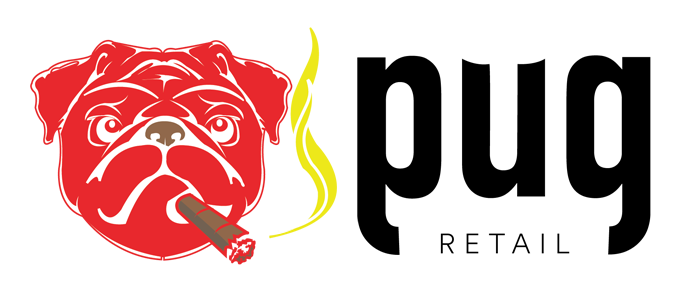What if there was a way to maximize your profits during seasonal sales? Seasonal sales present a golden opportunity for small businesses to boost revenue, clear out inventory, and attract new customers. With the right planning and tools, you can navigate these selling seasons successfully while making the most of your products.
Understanding Seasonal Sales
Seasonal sales refer to promotional periods that coincide with holidays or specific times of the year, like back-to-school, winter holidays, or summer clearance. These sales play a crucial role in the retail calendar and can significantly impact your revenue. By identifying the seasons relevant to your business, you can strategically prepare to meet customer demands and expectations.
Importance of Seasonal Sales Planning
Why is planning for seasonal sales so crucial? Seasonal sales aren’t just about discounts; they’re about creating an experience for your customers. Effective planning allows you to understand your market better, forecast sales, and align your inventory levels. Additionally, it helps you manage your resources, from staff scheduling to marketing efforts.
Analyzing Historical Data
One of the first steps in seasonal sales planning is to analyze historical sales data. This allows you to identify patterns, peak selling periods, and popular items during previous seasons. Your point-of-sale (POS) system, like the one provided by pugretail.com, can give you detailed insights into sales trends, enabling you to make informed decisions.
Tracking Sales Trends
Keeping a close eye on sales trends will help you determine which products to stock up on for upcoming seasons. This can be done through reports generated by your POS system, allowing you to see which items had the highest sales during seasonal periods in the past.
| Time Period | Popular Products | Sales Numbers |
|---|---|---|
| Christmas 2022 | Gift items, decorations | $15,000 |
| Summer 2022 | Outdoor gear, swimsuits | $10,000 |
| Back-to-School 2022 | School supplies, backpacks | $8,000 |
With this information, you can make better stocking decisions.
Setting Goals
Before you kick off any promotional activity, you should set clear and attainable goals for your seasonal sales. What do you hope to achieve? Is it to increase overall sales, attract new customers, or clear out slow-moving items? By setting specific goals, you can measure the success of your initiatives and adjust your strategy accordingly.
SMART Goals
Using the SMART criteria (Specific, Measurable, Achievable, Relevant, Time-bound) can help in creating effective goals:
- Specific: Instead of simply aiming to increase sales, specify the amount you want to achieve.
- Measurable: Determine how you’ll track your progress.
- Achievable: Ensure your goal is realistic based on past performance and current resources.
- Relevant: Your goals should align with your overall business objectives.
- Time-bound: Set a deadline for achieving your goals.
Stock Management
Effective inventory management is crucial during seasonal sales. If you don’t have the right products when customers are ready to buy, you may miss out on sales opportunities. Additionally, being overstocked can lead to excess inventory, which can hurt your bottom line.
Using Your POS System for Inventory Management
Leverage the strengths of pugretail.com to help manage your inventory levels efficiently. With a well-functioning POS system, you can monitor stock in real-time, allowing you to react quickly to changing customer demands.
- Forecasting Demand: By analyzing past sales data, you can start to project your needs for seasonal stock.
- Automatic Alerts: Set up alerts through your POS system to notify you when stock levels are low.
- Supplier Relationships: Build good relationships with suppliers so you can quickly replenish stock when needed.
Balancing Stock Types
During seasonal sales, it’s important to effectively balance your stock types; this means having a mix of high-demand items and unique products that may attract impulse buys.
| Product Type | Description | Recommended Stock Level |
|---|---|---|
| Bestsellers | Items that sell rapidly | High |
| Seasonal Goods | Limited time offerings | Medium |
| Niche Products | Special items to attract attention | Low |
Having a diversified inventory encourages shoppers to spend more while also catering to various tastes and preferences.
Marketing Your Seasonal Sales
Marketing is essential when planning for seasonal sales. You want potential customers to know about your sales, so having a transparent and engaging marketing strategy is important.
Creating a Marketing Plan
Start by outlining how you’ll communicate your seasonal sale to your customers. Consider utilizing a variety of channels to reach them effectively:
- Email Marketing: Send targeted emails to your customer list announcing your upcoming sales.
- Social Media: Use platforms like Instagram, Facebook, and Twitter to promote special offers.
- In-Store Promotions: Create eye-catching signage to highlight sales and discounts within your physical store.
Engaging with Your Audience
Don’t just broadcast your promotional messages; engage with your audience. Consider running contests or polls on social media to create buzz, or provide behind-the-scenes looks at how you’re preparing for your seasonal sale.
Staffing and Training
During peak seasonal sales periods, staffing becomes essential. You want to ensure that your store can handle the influx of customers without sacrificing service quality.
Hiring Temporary Staff
Consider bringing in temporary staff to manage the increased workload during peak periods. This can help maintain service levels and ensure customers have a great shopping experience.
Training Your Team
Invest time in training your team on both product knowledge and customer service. Understanding the products can empower your staff to provide informed recommendations, while excellent service can foster customer loyalty.
Leveraging Technology
In this digital age, technology is your ally in maximizing seasonal sales. Your POS system, provided by pugretail.com, helps streamline many processes, making your life a bit easier.
Analytics and Reporting
Using analytics tools allows you to monitor performance metrics in real-time. You can observe sales patterns, customer behavior, and other critical data that can help refine your strategies.
Online Presence
Given the growing trend of e-commerce, having a robust online presence can provide a broader customer reach. If you haven’t already, consider setting up an online store or at least utilizing social media for selling.
Customer Relationship Management
A good CRM system helps retain customers post-season. Maintaining relationships through follow-up emails, special promotions, and loyalty programs can increase the likelihood of repeat purchases.
Post-Season Evaluation
After the seasonal sales have wrapped up, it’s time to evaluate your performance. Reflect on what worked well and what could be improved for the next round.
Gathering Feedback
Collect feedback from customers and staff to understand their experiences. This insight can be invaluable when planning future sales.
Analyzing Results
Review key performance indicators (KPIs) such as total sales, customer footfall, and stock levels. Evaluate how well you met your initial goals. This process will guide you in optimizing your approach for future seasons.
Conclusion
Seasonal sales planning isn’t a one-time effort; it’s a continuous journey of learning and adapting. By taking time to analyze data, set clear goals, manage inventory wisely, and engage your customers, you can maximize your profits during these crucial selling times.
Remember that pugretail.com is your partner in this journey, bringing over 30 years of POS support for small businesses. With the right planning, you can elevate your seasonal sales game and foster long-term relationships with your customers, ensuring that they keep coming back season after season.

